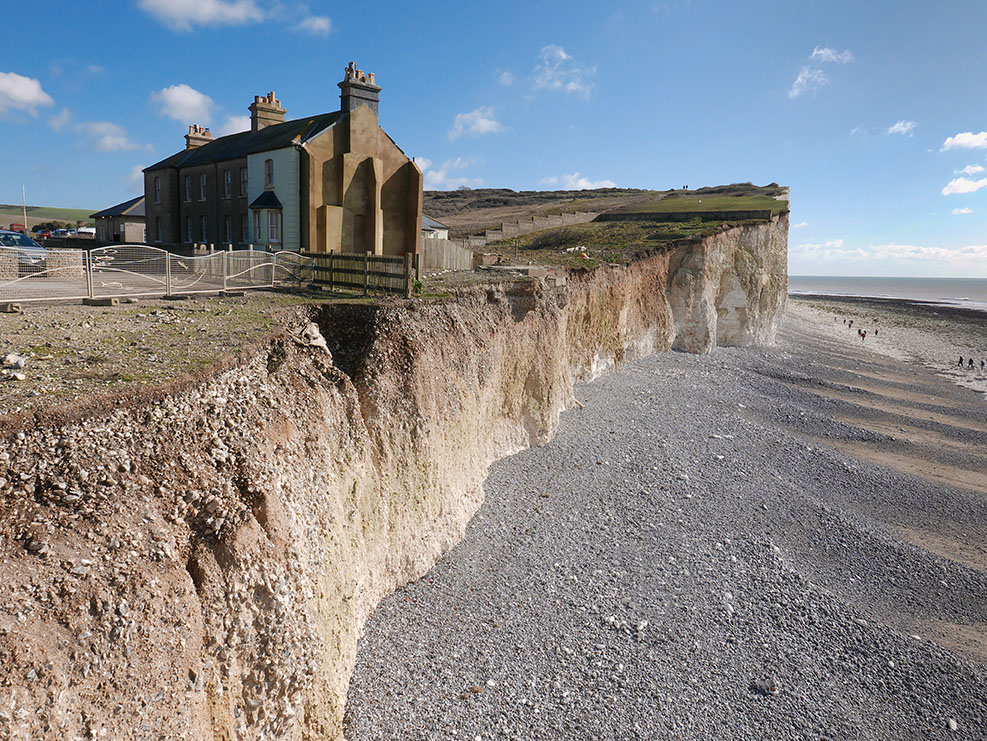
< Back
erosion
Definition
Erosion is the process by which the Earth's surface is worn away by the forces of nature. These forces include wind, water, ice, and gravity. Erosion can happen slowly over time, or it can happen quickly.
There are two main types of erosion: water erosion and wind erosion. Water erosion happens when water moves across the Earth's surface. It can carry away small pieces of soil and rock, which can eventually form rivers, lakes, and oceans. Wind erosion happens when the wind blows across the Earth's surface. It can also carry away small pieces of soil and rock, which can eventually form sand dunes and other features.
Erosion can be a natural process, but it can also be caused by human activities. For example, deforestation can increase the amount of water erosion, and construction can increase the amount of wind erosion.
Erosion can have a number of negative effects. It can damage property, pollute water supplies, and destroy habitats. However, erosion can also have some positive effects. For example, it can help to create new landforms and can help to distribute nutrients throughout the soil.
There are a number of ways to prevent or control erosion. These include planting trees, building dams, and using erosion control techniques.
How can the word be used?
Erosion can cause a variety of problems, such as landslides, flooding, and the loss of soil.

Different forms of the word
Noun: erosion, wearing away, weathering.
Adjective: erosive, eroding.
Verb: to erode, to wear away.
Synonyms: attrition, decay, disintegration.
Antonyms: accretion, accumulation, growth.
Etymology
The word "erosion" comes from the Latin word erodere, which means "to gnaw away." It was first used in English in the 16th century, and it is still used today to refer to the process by which the Earth's surface is worn away by wind, water, ice, or gravity.
Question
Where can you see erosion happening?
AQA Science Exam Question and Answer
Question:
Explain the concept of erosion and its role in shaping Earth's surface. Describe the different types of erosion, such as water, wind, and glacial erosion, and the factors that influence their intensity. Provide examples of landforms created by erosion, such as canyons, valleys, and coastal cliffs. Discuss the significance of erosion in geological processes and the importance of implementing erosion control measures to protect landscapes and prevent environmental damage.
Answer:
Erosion is the process of wearing away and transporting rocks, soil, and sediment from one place to another, shaping Earth's surface over time. It is mainly driven by natural forces like water, wind, and glaciers. Water erosion occurs through the action of rivers and rainwater, carving out valleys and canyons. Wind erosion happens in arid regions, moving sand and dust and forming sand dunes. Glacial erosion involves the movement of ice, creating U-shaped valleys and fjords.
Erosion intensity is influenced by factors like climate, topography, vegetation cover, and human activities. Excessive erosion can lead to the loss of fertile soil, damage to infrastructure, and habitat loss for wildlife.
Understanding erosion is crucial for managing landscapes sustainably. Implementing erosion control measures, such as afforestation, contour ploughing, and building retaining walls, helps preserve valuable land and prevents environmental degradation. By addressing erosion, we can protect Earth's natural beauty and maintain the health of our ecosystems for future generations.